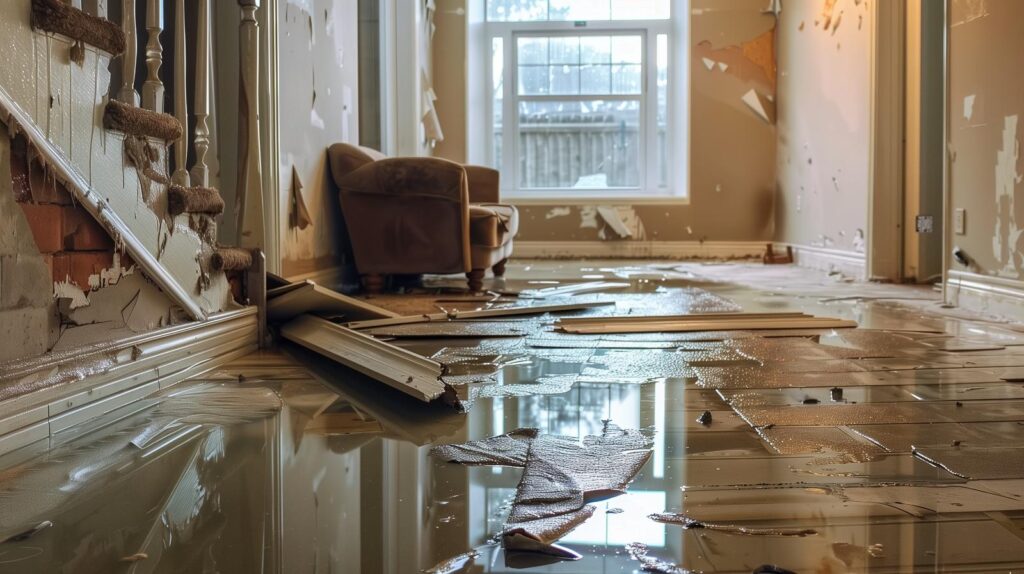
Contents
When it comes to sewage cleanup, can you really afford to take chances? Using proven methods is essential for ensuring safety and health. These techniques not only eliminate harmful pathogens but also prevent future contamination. Understanding the risks and the importance of timely action can make all the difference. What are the specific methods that guarantee an effective cleanup, and how do they protect you and your community?
Key Takeaways
- Proven methods effectively eliminate harmful pathogens and reduce health risks associated with sewage exposure.
- Utilizing established techniques ensures thorough and efficient sewage removal, minimizing environmental impact.
- Implementing recognized disinfection protocols neutralizes residual contaminants, enhancing safety for cleanup personnel and residents.
- Following best practices fosters community trust and responsibility in managing sewage-related issues.
- Consistent application of proven methods prevents costly repairs and long-term health complications resulting from inadequate cleanup.
Understanding the Risks of Sewage Contamination
When you encounter sewage contamination, understanding the associated risks is essential for effective management and cleanup. Sewage contains harmful pathogens, chemicals, and toxins that pose significant health hazards. Exposure can lead to gastrointestinal illnesses, respiratory issues, and even long-term health complications.
It’s vital to recognize the potential for secondary contamination, as contaminated surfaces and materials can harbor these risks long after the initial incident.
Additionally, the environment suffers from sewage spills, affecting soil, water sources, and local ecosystems. Contaminated water can disrupt aquatic life, leading to broader ecological imbalances.
You should also consider the legal implications; failing to address sewage contamination properly can result in significant fines or liability claims.
The Importance of Timely Cleanup
Prompt action in sewage cleanup greatly alleviates health risks and environmental damage. When you delay addressing sewage spills, hazardous pathogens can proliferate, leading to serious health issues for you and your community. Contaminated water can rapidly infiltrate soil and groundwater, posing long-term environmental threats.
By responding swiftly, you not only protect public health but also safeguard natural resources. Timeliness in cleanup guarantees that the affected area is managed before damage escalates. It reduces the likelihood of costly repairs and remediation efforts later on.
Furthermore, immediate action fosters a sense of responsibility within your community, reinforcing the value of collective action in maintaining a safe environment.
In essence, prioritizing timely sewage cleanup is essential for minimizing health risks, protecting ecosystems, and fostering community well-being. Your proactive approach can greatly influence outcomes, making a difference in both immediate and long-term scenarios.
Proven Techniques for Effective Sewage Removal
Effective sewage removal requires a combination of proven techniques tailored to the specific situation.
First, assess the extent of the contamination. You’ll want to identify the source and type of sewage—whether it’s black water or gray water—as this dictates your approach.
Next, utilize high-powered pumps to remove standing sewage efficiently. Follow this with thorough cleaning using industrial-grade disinfectants to eliminate pathogens.
Incorporating specialized vacuums can enhance the removal process, ensuring that even the tiniest residue is addressed.
After extraction, consider employing dehumidifiers to manage moisture levels, preventing mold growth.
Finally, dispose of waste according to local regulations, ensuring the environment remains protected.
By adhering to these proven techniques, you’ll not only restore the area effectively but also foster a sense of community confidence in your cleanup efforts.
Health and Safety Considerations
While addressing sewage cleanup, it’s important to prioritize health and safety to protect both workers and residents. Sewage contains harmful pathogens, chemicals, and bacteria that can pose severe health risks. You must guarantee that all personnel wear appropriate personal protective equipment (PPE), including gloves, masks, and waterproof clothing, to mitigate exposure.
Proper ventilation is significant during the cleanup process to reduce airborne contaminants. Additionally, using proven disinfection methods helps neutralize residual pathogens, safeguarding public health.
Regular training and adherence to safety protocols are crucial in minimizing accidents and guaranteeing that everyone involved understands the potential hazards.
Involving local health authorities can provide further guidance on compliance with regulations, enhancing community safety.
Long-term Solutions to Prevent Future Issues
To prevent future sewage issues, it’s vital to implement an all-encompassing approach that addresses both infrastructure and community education. By doing so, you can create a resilient environment that minimizes risks and enhances public health.
Here are three key strategies to take into account:
Upgrade Infrastructure: Regularly assess and modernize sewage systems to handle increased capacity and prevent leaks. Investing in durable materials and technology can greatly reduce failures.
Conduct Community Workshops: Educate residents about proper waste disposal practices and the importance of maintaining plumbing systems. Empowering your community fosters responsibility and awareness.
Establish Monitoring Programs: Implement routine inspections and data collection to identify potential issues before they escalate. Early detection is essential for effective prevention.
Final Thoughts
In summary, prioritizing proven methods for sewage cleanup is essential for safeguarding your health and the environment. Swift strategies and systematic solutions not only tackle the immediate threat of contamination but also foster a future free from foul hazards. By embracing effective techniques, you can champion community cleanliness and combat potential crises. Remember, a responsible response today guarantees a resilient tomorrow, ultimately leading to a safer, stronger society for everyone involved.
Recent Posts
Top Flood Damage Repair Extraction Techniques
When floodwaters rise, the clock starts ticking, much like a ticking time bomb for your
Advanced Methods for Flood Damage Repair
Imagine a family returning home after a severe storm only to find their basement submerged
5 Best Flood Damage Repair Extraction Techniques
Many people underestimate the complexity of flood damage repair, especially when it comes to extraction
